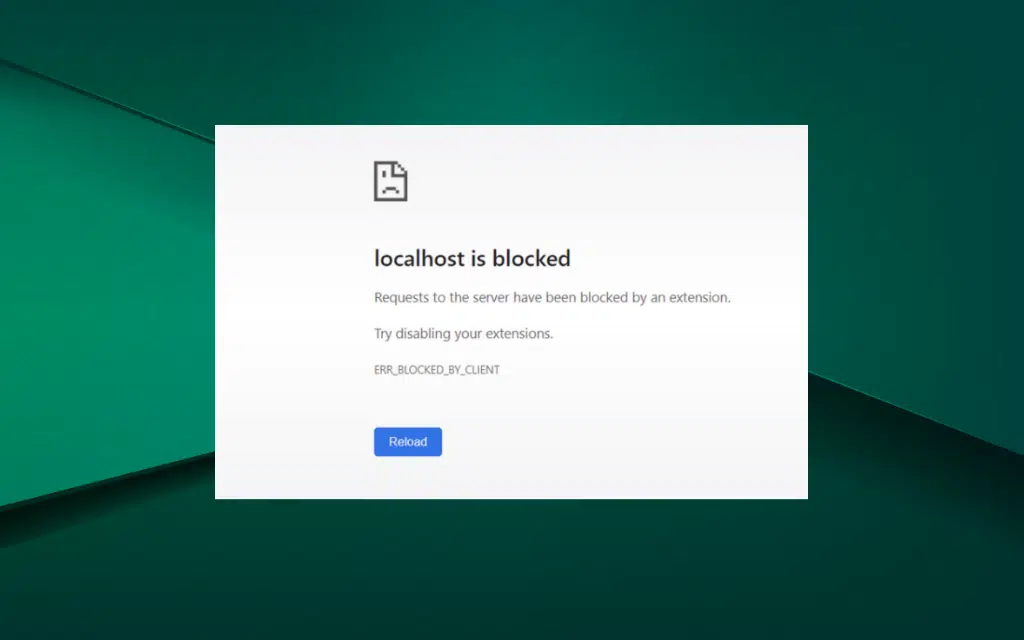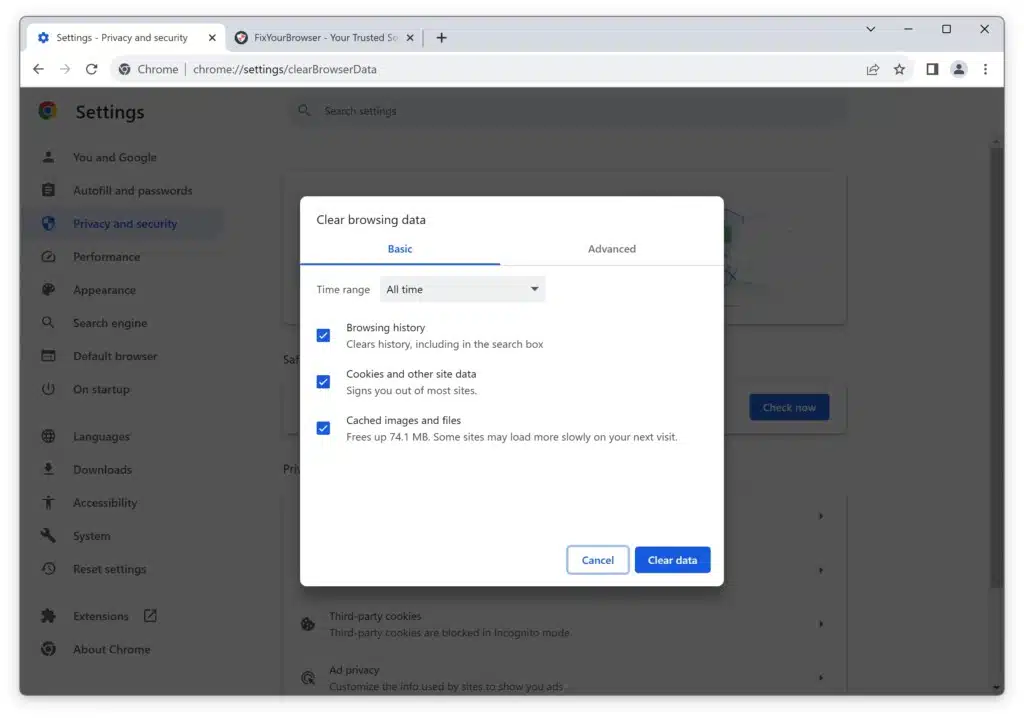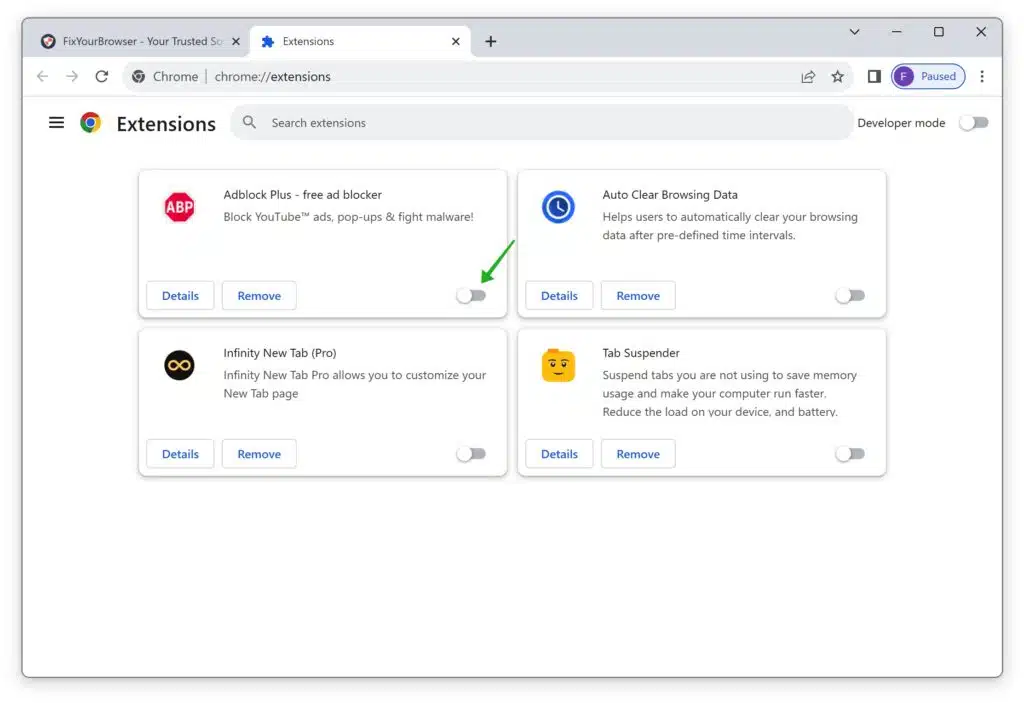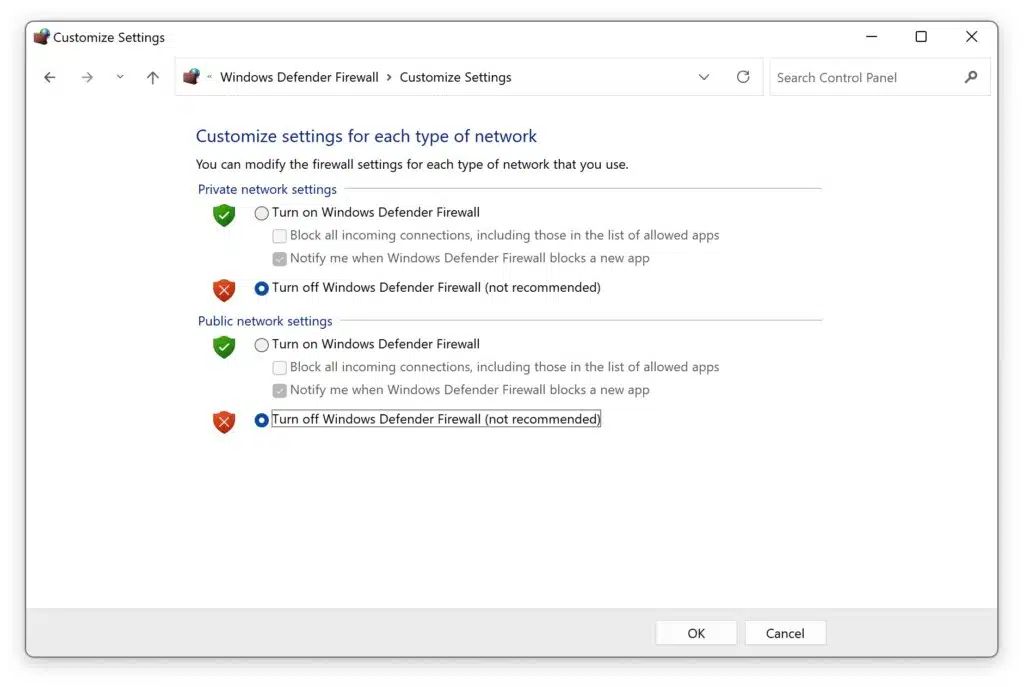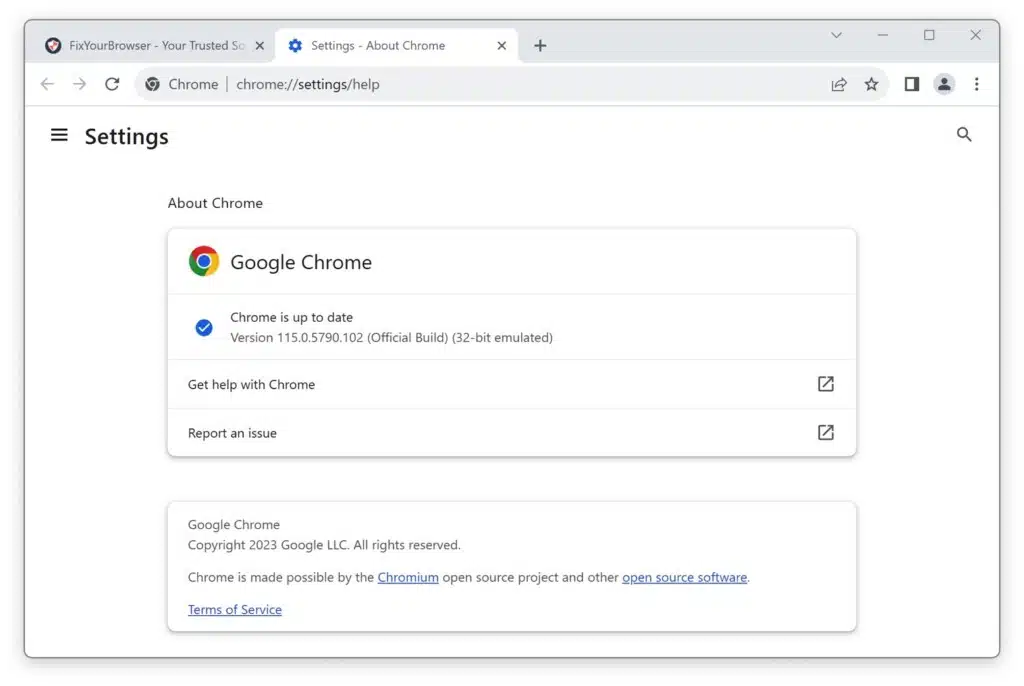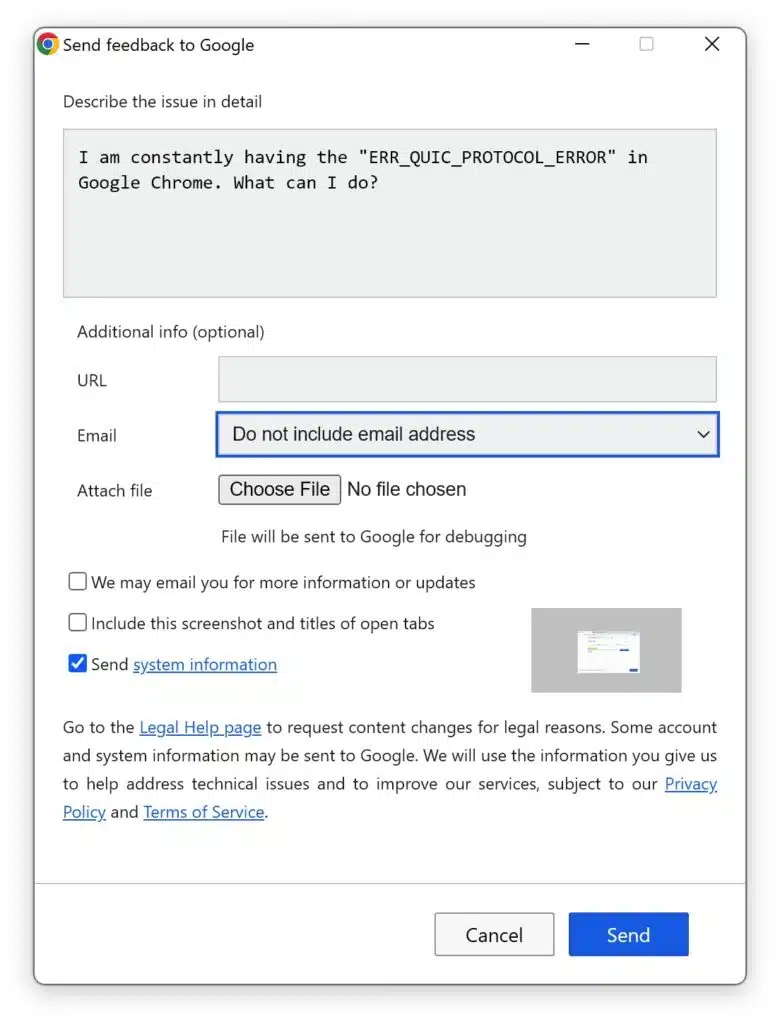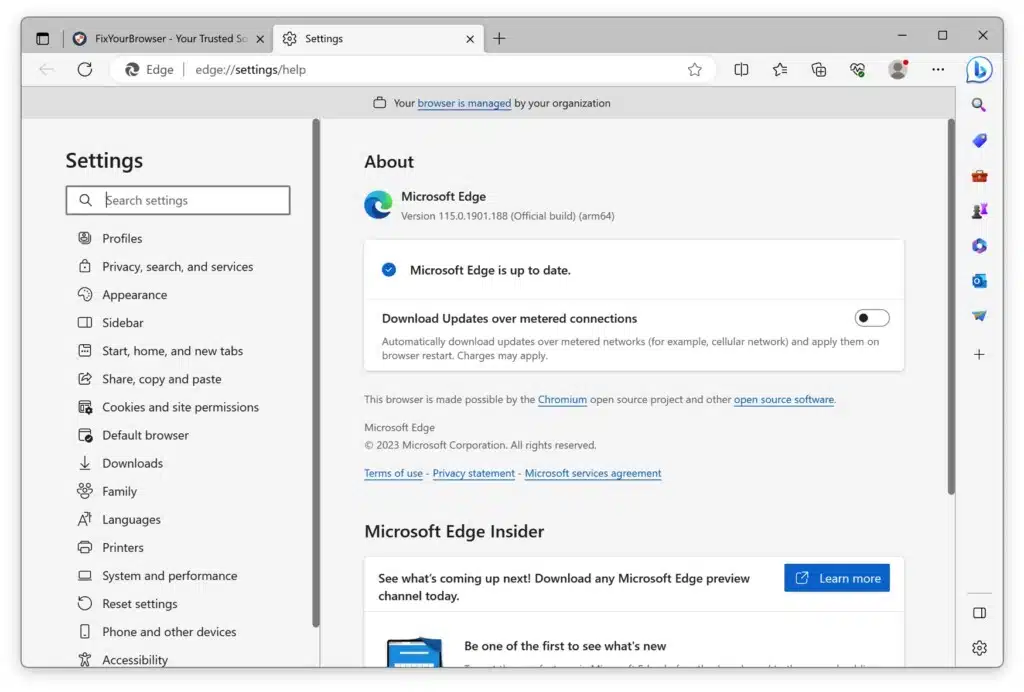Understanding the “ERR_BLOCKED_BY_CLIENT” error in Chrome can be frustrating, significantly when it hinders the proper functioning of websites or web applications. This error typically occurs when the Chrome developer tools or an ad-blocking plugin blocks a request. It can be caused by extensions like Adblock or browser safety plugins that use filters to block specific resources.
To troubleshoot this issue, you can try debugging with an extension like Ad Blocker Plus, which can provide insights into why the resource was blocked and help prevent future blocking if necessary. It’s worth noting that forms may also be affected by ad-blocking software, and using alternatives like CSS or placeholders until the forms are fully loaded can be a practical solution.
However, asking visitors to modify their browser settings or disable ad blockers may not always be effective and could potentially lead to a drop-off in visitors.
Sometimes, the “ERR_BLOCKED_BY_CLIENT” error can be caused by missing server files, URL typos, or other browser extension-blocking requests. Clearing the browser cache and resetting browser settings might help resolve the error.
Additionally, renaming files with advertising-related terms and using relevant keywords can prevent content from being blocked. Ad blockers match URIs against expressions to determine what to block, sometimes resulting in false positives. Disabling extensions or reporting incorrect or overly-broad rules to the respective team can be helpful if you encounter this issue.
What is the ERR_BLOCKED_BY_CLIENT Error?
If you’re a website owner or developer, you may have encountered the “ERR_BLOCKED_BY_CLIENT” error message in the Chrome Dev Tools Console. This error typically occurs when a request is blocked by something like the Chrome developer tools or an ad-blocking plugin. In this article, we’ll explore the causes of this error and its impact on website functionality. We’ll also discuss some potential solutions and strategies for troubleshooting the issue.
There are several common causes of the “ERR_BLOCKED_BY_CLIENT” error. One possible cause is the presence of ad-blocking extensions or browser safety plugins. These tools may mistakenly identify specific resources as ads or potential security threats and block them accordingly. Another cause could be missing server files or URL typos, which can result in a blocked request.
Impact of the ERR_BLOCKED_BY_CLIENT Error on Website Functionality
The “ERR_BLOCKED_BY_CLIENT” error can have a significant impact on the functionality of your website. For example, if a crucial script or stylesheet is blocked, it could lead to broken functionality or a distorted layout. Additionally, ad-blocking software may block forms on your website, preventing visitors from submitting important information. This can be particularly problematic for websites that rely on user-generated content or require form submissions for various purposes.
To mitigate the impact of the error on website functionality, you can consider using CSS or placeholders until the blocked resources are loaded. This ensures that the overall user experience is not compromised while you address the underlying issue. However, it’s important to note that asking visitors to modify their browser settings or disable ad blockers may not be effective and could potentially result in a drop-off in visitors.
How to fix ERR_BLOCKED_BY_CLIENT Error
If you encounter the “ERR_BLOCKED_BY_CLIENT” error, there are several steps you can take to troubleshoot and resolve the issue. First, clearing your browser cache and resetting browser settings can help eliminate any temporary conflicts or outdated data causing the error. Renaming files with advertising-related terms and using relevant keywords can prevent ad-blocking extensions from blocking content.
Using an ad blocker with debugging features, such as Adblock Plus, can be particularly helpful in identifying patterns causing the error. These tools allow you to view blocked items and the rules that triggered the block, giving you valuable insights into why the resource was blocked. If possible, you can also try allowing the website in the ad blocker’s settings or contact the website owners for assistance in resolving the error.
Sometimes, the “ERR_BLOCKED_BY_CLIENT” error may result from false positives triggered by ad-blocking extensions. Users can temporarily disable their extensions or identify the specific rule-blocking content to address this. Once identified, users can report the rule as incorrect or overly broad to the team that created it. AdBlock Plus, for example, has a feature called Blockable Items view that provides visibility into blocked items and the associated rules.
Identifying the Source of the ERR_BLOCKED_BY_CLIENT Error
The first step in troubleshooting the ERR_BLOCKED_BY_CLIENT error is to determine the source of the blockage. This can be achieved using a debugging tool like Ad Blocker Plus. By enabling the debugging features of this extension, you can gain insights into why a particular resource was blocked. This information is valuable in preventing future blocking if necessary.
Once you have identified the source of the error, there are several steps you can take to resolve it. One standard solution is to clear the browser cache and reset browser settings. This helps eliminate potential conflicts or corrupted data that may be causing the error.
Another effective method is to rename files with advertising-related terms and use relevant keywords. Ad blockers often target resources based on their file names or content. Avoiding terms associated with advertising can prevent your content from being mistakenly blocked.
Clear Browser Cache
Clearing the browser cache and resetting settings can quickly and effectively solve the ERR_BLOCKED_BY_CLIENT error. Over time, cached data and incorrect settings can interfere with the proper functioning of websites and trigger blocking errors. Following the appropriate steps for the Google Chrome browser, you can clear the cache and reset settings to their default values.
- Open Google Chrome.
- Click on the three vertical dots at the top right corner of the browser window.
- From the drop-down menu, hover over “More Tools” and click “Clear browsing data.”
- Select “Cached images and files” in the pop-up window and “Cookies and other site data.”
- Choose the time range for which you want to clear the data (e.g., “Last hour,” “Last 24 hours,” “All time”).
- Click on the “Clear data” button.
- Once the cache and cookies are cleared, restart your browser and check if the ERR_BLOCKED_BY_CLIENT is resolved.
Renaming Files and Using Relevant Keywords
Ad blockers rely on filters and rules to determine which resources to block. You can avoid triggering these filters by renaming files with advertising-related terms and using relevant keywords. This simple step can ensure that your content is not mistakenly identified as advertising and blocked by ad-blocking software.
Addressing False Positives in Ad Blockers
Ad blockers often match URIs against expressions to determine what to block. While this method effectively blocks unwanted content, it can sometimes result in false positives. To address this issue, users can temporarily disable their extensions or identify the specific rule-blocking content. By reporting the incorrect or overly-broad rule to the team that created it, users can help improve the accuracy of ad-blocking filters.
Disable the installed browser extensions
In addition, you might want to disable the extension to load the content. Here is how.
- Launch Google Chrome on your computer.
- Click on the three-dot menu icon in the top-right corner of the browser window.
- From the dropdown menu, hover your mouse over “Extensions” and click “Manage Extensions.”
- You’ll be redirected to the “Extensions” page, where you can see a list of all the extensions installed in your browser.
- To disable an extension, toggle the switch next to it to the off position.
- Once disabled, the extension will be grayed out, indicating that it is no longer active.
- Repeat this process for any other extensions that you want to disable.
- After disabling the extensions, close and reopen Google Chrome to apply the changes.
Deactivate VPN temporarily
If you are using a VPN (Virtual Private Network), it may be causing the ERR_BLOCKED_BY_CLIENT error. Try disconnecting from the VPN and see if the error is resolved. If you need a VPN for other purposes, try connecting to a different server or contact your VPN service provider for assistance.
Temporarily Disable Third-Party Firewalls
One potential solution to resolve the ERR_BLOCKED_BY_CLIENT is temporarily disabling any third-party firewalls that might be causing conflicts. These firewalls, often bundled with antivirus software, can sometimes interfere with Chrome’s ability to load specific content.
To disable a third-party firewall, you’ll need to access the settings of your antivirus software. Look for an option to disable the firewall or adjust its settings temporarily. Remember that this step may vary depending on your antivirus program, so consult the software’s documentation or support resources for specific instructions.
Temporarily Disabling Windows Defender Firewall
If you’re not using any third-party firewalls and rely solely on Windows Defender Firewall, temporarily disabling it could help troubleshoot the ERR_BLOCKED_BY_CLIENT. Windows Defender Firewall, the built-in firewall solution for Windows operating systems, can occasionally interfere with Chrome’s ability to load external content.
To disable Windows Defender Firewall, follow these steps:
- Press the Windows key + R to open the Run dialog box.
- Type “control firewall.cpl” and press Enter to open the Windows Defender Firewall settings.
- Click “Turn Windows Defender Firewall on or off in the left-hand menu.”
- Select “Turn off Windows Defender Firewall” for private and public network settings.
- Click “OK” to save the changes.
Update Google Chrome to the Latest Version
One of the first steps you should take when encountering the ERR_BLOCKED_BY_CLIENT is to ensure you’re using the latest version of Google Chrome. Outdated browser versions can sometimes lead to compatibility issues or loading errors. To update Chrome, follow these simple steps:
- Open Google Chrome on your computer.
- Click on the three vertical dots at the top right corner of the browser window.
- From the drop-down menu, hover over “Help” and click “About Google Chrome.”
- Chrome will automatically check for updates and install them if available.
- Once the update is complete, restart your browser and check if the ERR_BLOCKED_BY_CLIENT persists.
Contact Google Support for Further Assistance
If the above solutions didn’t resolve the ERR_BLOCKED_BY_CLIENT, it’s advisable to contact Google Support for further assistance. They have dedicated teams that can help diagnose and troubleshoot specific issues related to Google Chrome. To contact Google Support, follow these steps:
- Open Google Chrome.
- Click on the three vertical dots at the top right corner of the browser window.
- From the drop-down menu, hover over “Help” and click “Report an issue.”
- Fill out the form with all the relevant details about the error and provide a detailed description of the issue you’re facing.
- Click on the “Send feedback” button to submit your report.
- Google Support will review your report and reply with further instructions or solutions.
Switch to an alternative web browser
If you have exhausted all other options and the issue persists, consider switching to an alternative web browser. While Google Chrome is a popular choice for many users, sometimes certain websites may have compatibility issues with Chrome. By switching to another browser, such as Mozilla Firefox or Microsoft Edge, you may be able to access the website without encountering the “ERR_BLOCKED_BY_CLIENT” error.
Seek Help from Support Forums or Professionals
If you have exhausted the troubleshooting steps mentioned above and can still not resolve the “ERR_BLOCKED_BY_CLIENT” content error, seeking help from support forums or professionals can provide valuable assistance. Here are a few resources you can consider:
- Support forums: Online forums dedicated to web development, browser-related issues, or SSL certificates can be a great source of information. Participate in these forums, describe your problem in detail, and seek guidance from experienced users or moderators.
- Professional assistance: In complex cases or situations where you lack technical expertise, consulting with professionals such as web developers, IT specialists, or cybersecurity experts can be beneficial. They can analyze the issue thoroughly and provide tailored solutions based on your circumstances.
Resolving the “ERR_BLOCKED_BY_CLIENT” error requires a systematic approach and may vary depending on the underlying cause. By following the essential precautions, additional troubleshooting steps, and seeking help from appropriate resources, you can increase the chances of resolving the error effectively.
I hope this helped. Thank you for reading!
